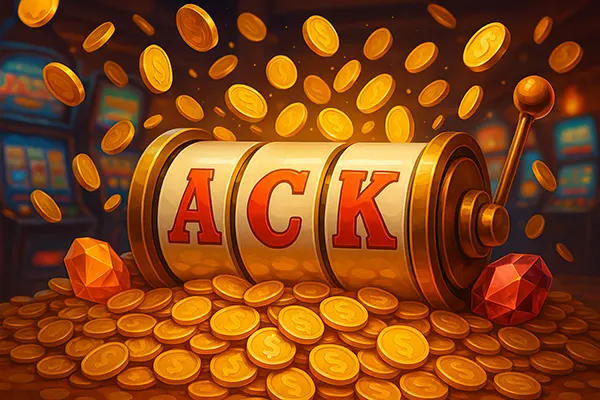
How Must-Drop Jackpots Work and Why They Hit Three Times in One Week at Red Tiger
In early February 2025, Red Tiger made headlines after three must-drop jackpots were triggered within the span of a single week—each delivering six-figure sums to lucky players. This incident drew attention not just because of the remarkable winnings, but due to the unique mechanics of must-drop jackpots that govern their inevitable payout. This article offers a comprehensive look into the structure, logic, and rare synchronicity behind this remarkable occurrence.
The Technology Behind Must-Drop Jackpots
Must-drop jackpots are a relatively recent innovation in the realm of online slots and casino games. Unlike progressive jackpots that can grow indefinitely, must-drop jackpots are configured to guarantee a payout before reaching a specific threshold. The two most common forms are “daily drop” jackpots and “super” jackpots. The daily type must be triggered before a set time each day, while super jackpots must be awarded before a maximum prize cap is met.
The engine that drives this system is an RNG-based algorithm working within the jackpot’s prize pool logic. Each spin made by players on eligible games contributes a small percentage to the shared jackpot pool. The backend infrastructure constantly monitors the pool’s growth and ensures compliance with the configured threshold limits.
In the case of Red Tiger, the jackpot’s payout logic uses real-time monitoring and probability balancing, making it statistically more likely to drop as it approaches the cap. This creates a dynamic system where tension builds among players and the chances of winning increase as the payout deadline looms.
Why the Triple Drop Was Statistically Rare
The week in question was not an ordinary one. On February 3rd, 5th, and 7th of 2025, three separate must-drop jackpots paid out—each crossing the £100,000 mark. The randomness of the system means such alignment is rare but not impossible. Analysts from Red Tiger suggested a correlation between increased player activity, favourable time windows, and rapid jackpot accumulation.
The combination of heightened user traffic (owing to new promotional campaigns), an increased spin rate on key Red Tiger titles, and overlapping thresholds among separate jackpots made it statistically plausible. In essence, each jackpot was independently nearing its maximum payout cap around the same period, which triggered the payouts in a compact timeframe.
Despite this, it remains a rare phenomenon. Most weeks yield a single significant drop, occasionally accompanied by minor daily jackpots. To witness three high-tier jackpots fall in under seven days is something even seasoned analysts consider an outlier.
Case Studies of the Week’s Jackpots
Each of the three jackpot wins had its own story, with players engaging through different Red Tiger titles. The first major drop occurred on a mobile spin of “Dynamite Riches Megaways,” with the player staking £0.40 per spin. The prize? £104,582. Just two days later, a player on “Gonzo’s Quest Megaways” triggered a jackpot valued at £112,340 after an extended autoplay session.
The final win came on “Piggy Riches Megaways,” where a mid-stakes player betting £1.20 hit the jackpot while playing through a promotional free spin bundle. This unique blend of player patterns showcases the flexibility of must-drop jackpots—they are not bound to high-stake users or single-session play.
All three winners were promptly verified and credited within 24 hours. Red Tiger issued public confirmations, reiterating their commitment to transparency and timely disbursement, and anonymised the user data in accordance with GDPR regulations.
Insights from Red Tiger’s Risk Team
Following this streak, Red Tiger’s internal risk and analytics division conducted a retrospective review. Their report concluded that no system flaws or exploitations occurred. The payouts were compliant with algorithmic expectations and platform risk parameters. While triple drops within a week are extremely uncommon, the scenario fell within a statistically acceptable window.
The report highlighted a surge in traffic of 21% compared to the monthly average, which they believe contributed to the jackpot acceleration. The interaction of thousands of users with multiple eligible games created a high-load environment that nudged the thresholds across the line.
Additionally, minor adjustments in game promotional strategies—such as increased bonus spins and boosted jackpot visibility—may have inadvertently synchronised player behaviour, leading to more rapid pool growth.

What Players Should Understand About Must-Drop Mechanics
One key takeaway is that must-drop jackpots are structured to be player-inclusive. Contrary to myths, the system doesn’t favour high-rollers. A player spinning at £0.20 has the same algorithmic chance of triggering the jackpot as someone spinning at £5. The determining factor is volume and proximity to the threshold—not wager size alone.
This model also enhances transparency. Players know that a jackpot is guaranteed to fall by a certain cap or time, which increases engagement and minimises the uncertainty often associated with traditional progressive jackpots. This predictability contributes to responsible gaming behaviour, allowing players to budget within known parameters.
However, players should still approach jackpot games with realistic expectations. While the system is structured to drop the pot, the specific timing remains unpredictable. This uncertainty, combined with guaranteed payout logic, creates an exciting but fair environment for casual and serious players alike.
Future Outlook for Red Tiger and Must-Drop Systems
Red Tiger has confirmed plans to expand its must-drop network in 2025. With new titles in development and broader integrations across casino platforms, the visibility and frequency of such jackpots are expected to increase. This may lead to more synchronised drop patterns, especially during seasonal promotional windows.
Industry insiders suggest that Red Tiger’s data-driven approach to jackpot allocation sets a precedent for other providers. By balancing risk with player engagement, they demonstrate that innovation in iGaming can be both entertaining and technically rigorous.
Ultimately, the must-drop model may evolve further, incorporating AI-based predictions for near-drops, enhanced player notifications, and more diverse jackpot formats—including community-based pools and time-tiered structures.
